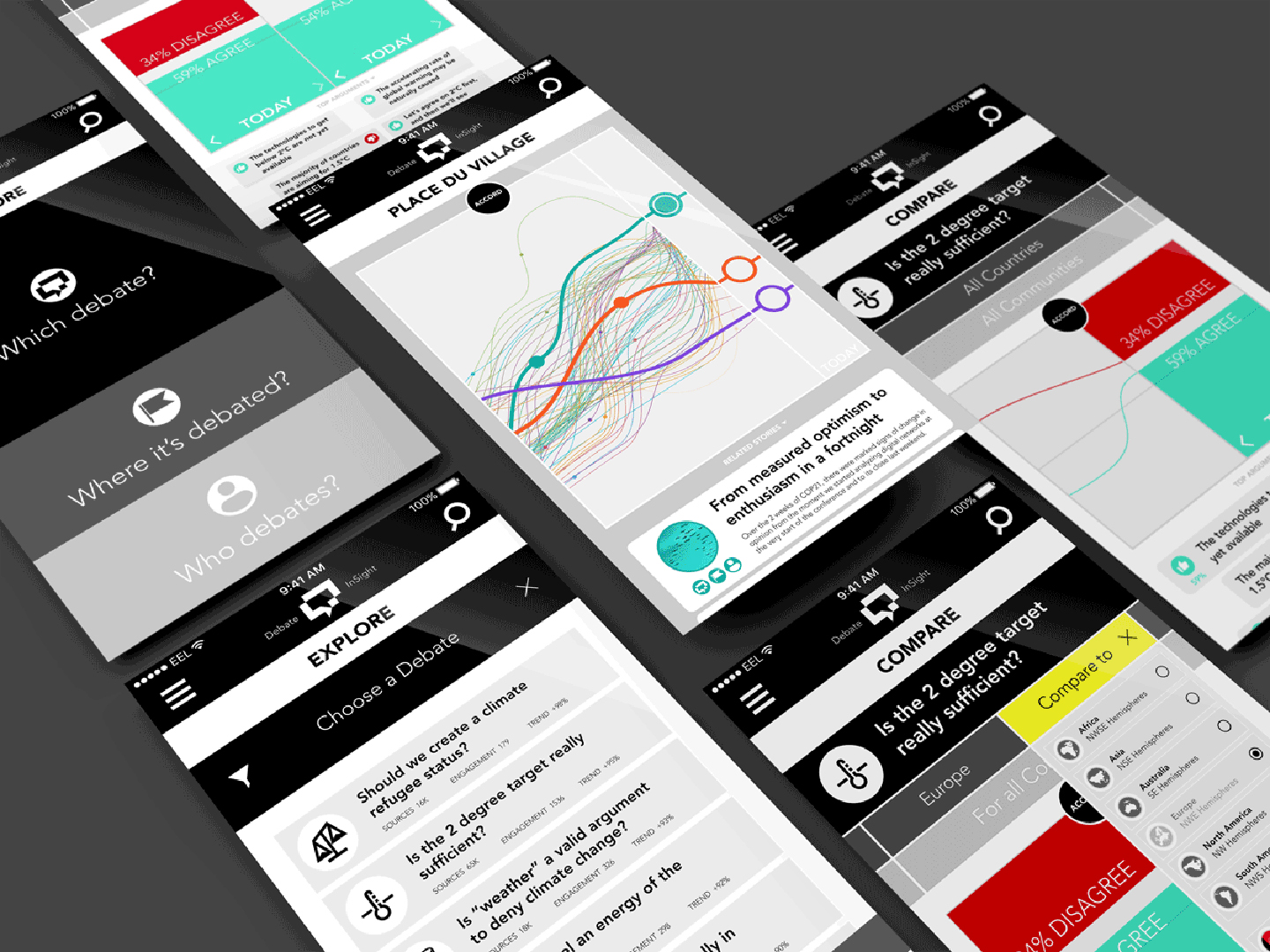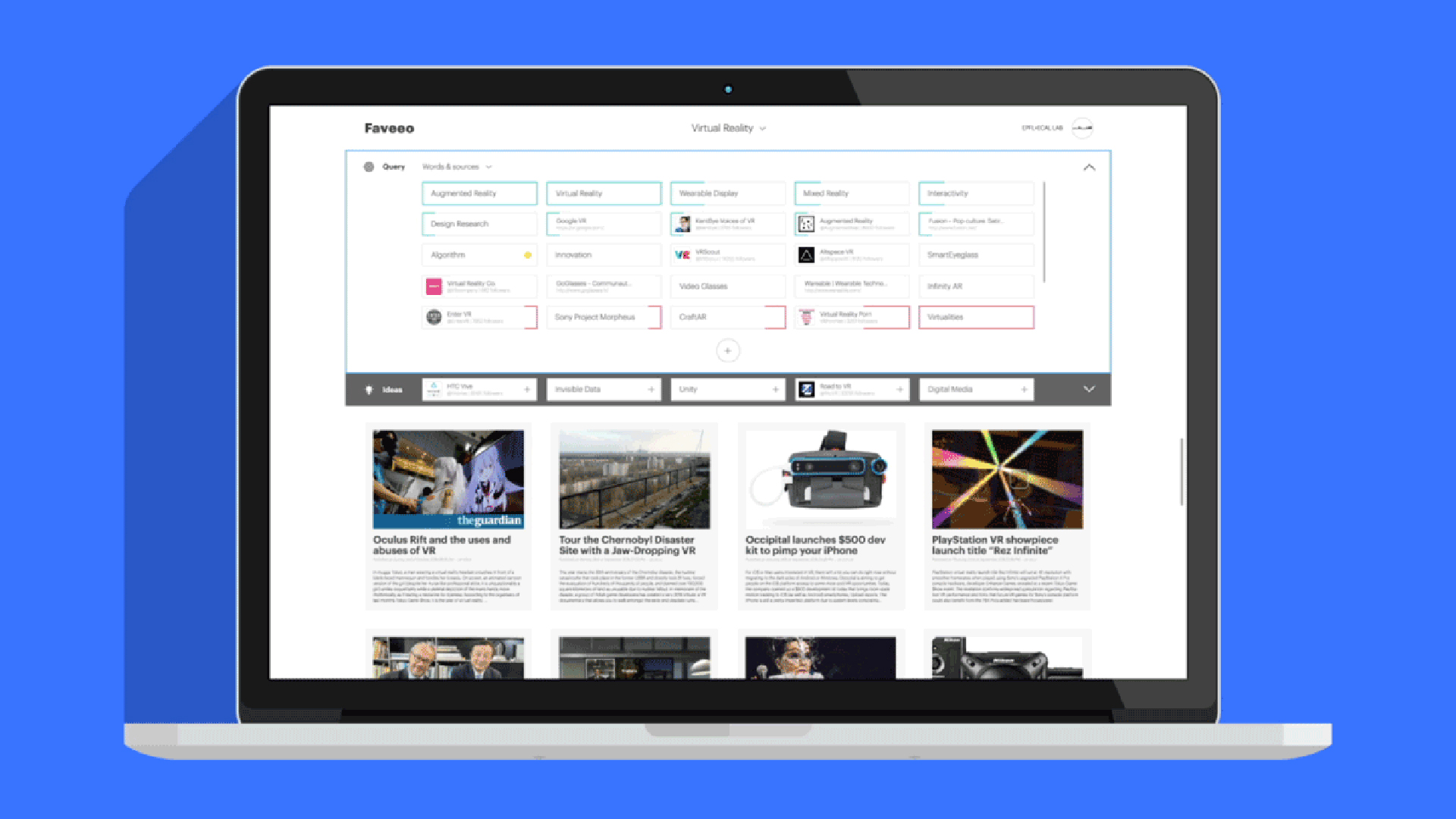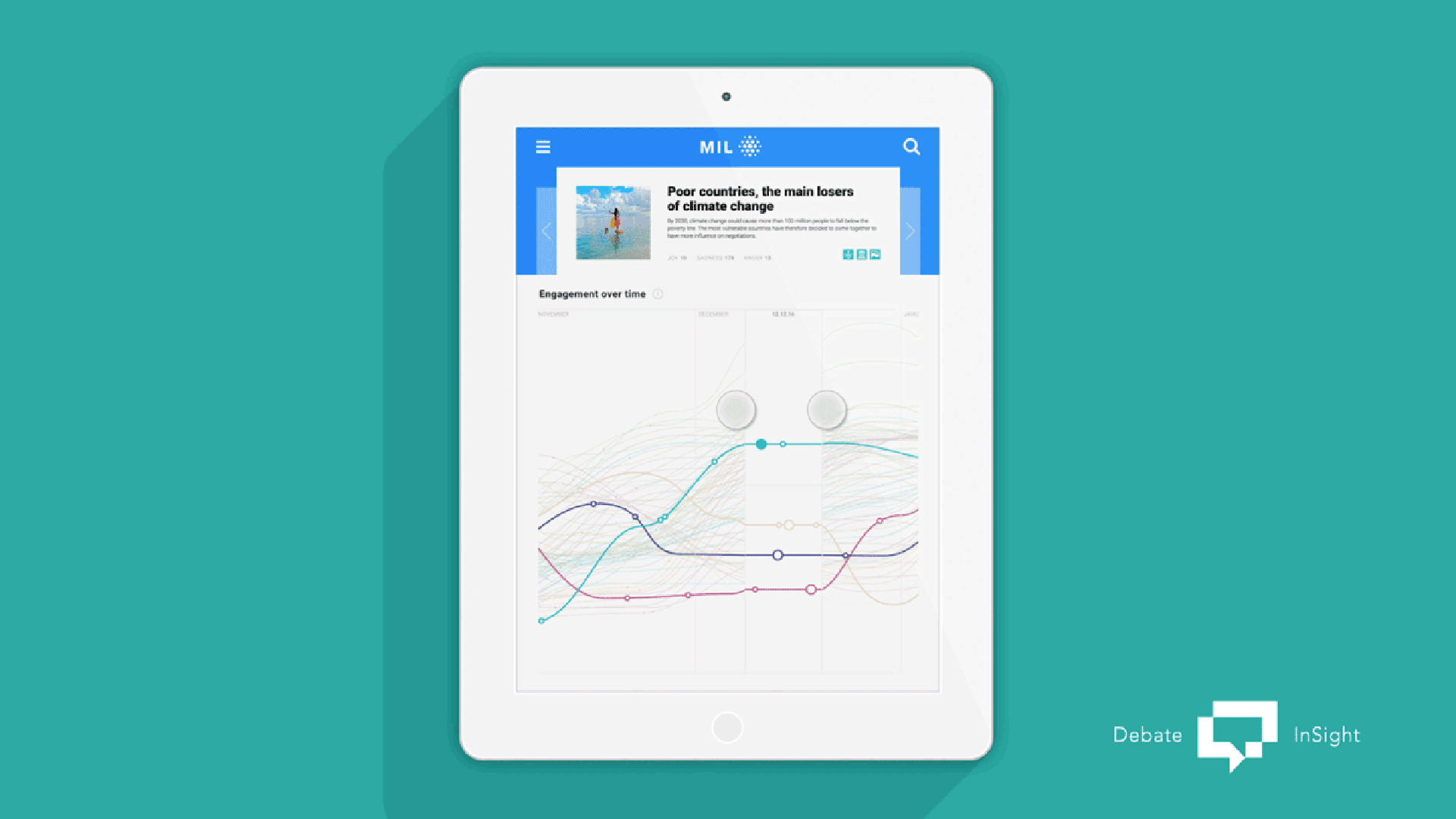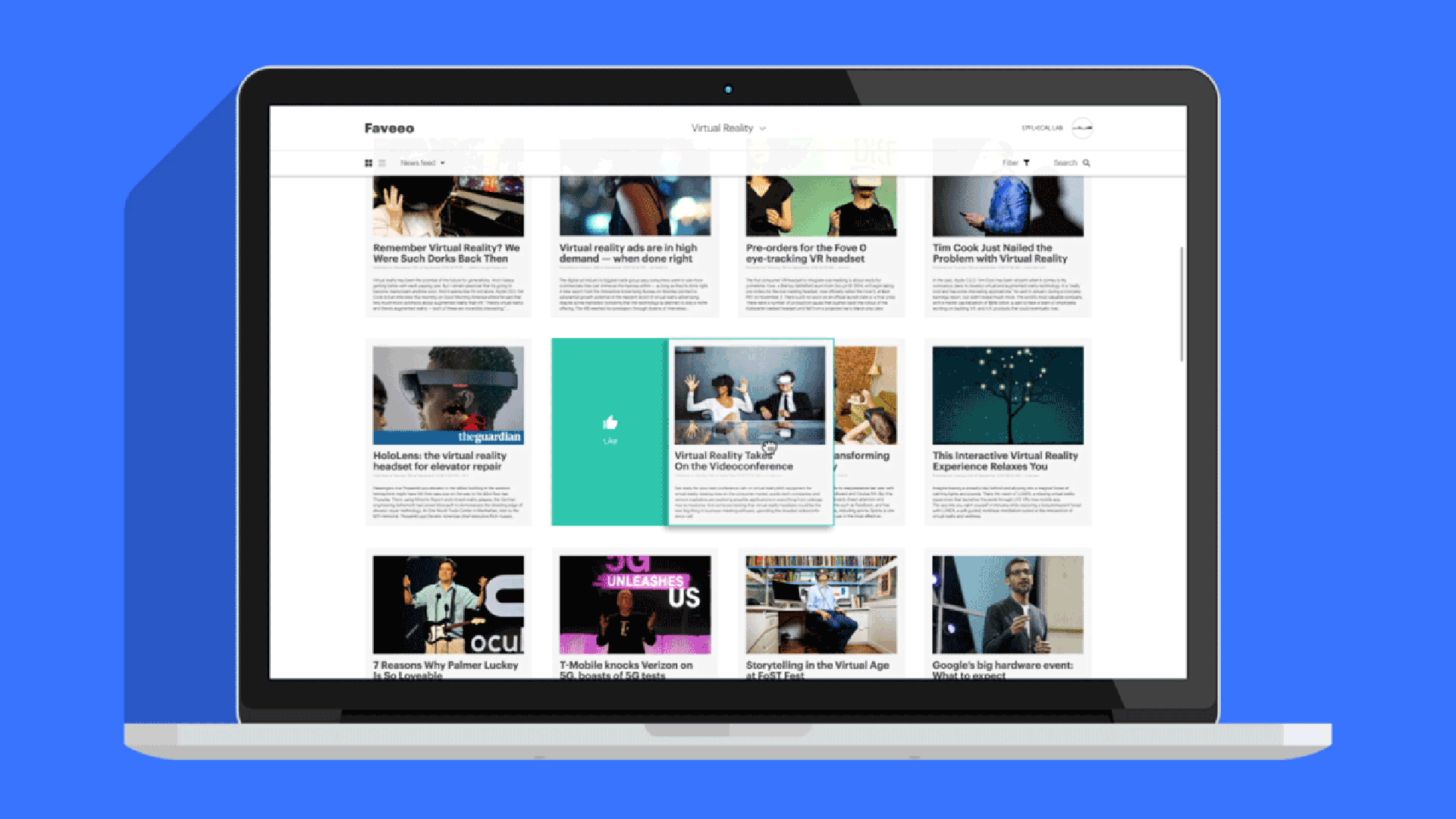Romain Collaud: Massive is Light
Artist(s):
Title:
- Massive is Light
Exhibition:
Category:
Artist Statement:
IT promises a daring future with the notions of Big Data, personalized information flow and machine learning. But how can the end user grasp this wealth of content? The Massive is Light research project defines a new approach to interface design, allowing everyone to interact with this emerging digital world. It is based not only on observations and analysis of existing tools, but also on theoretical and scientific findings. More specifically, and in order to anchor it in reality, [MIL] is based on research, experiments and studies – both visual and functional – from two concrete projects: Debate InSight and Faveeo.
Debate InSight is a platform which enhances understanding around the complexity of major public debates. It offers the user the possibility to choose its own navigation, to constitute a debate according to his interests and to compare its components from various angles. The second, Faveeo is a research tool which offers an unseen infrastructure to assist information search & aggregation. It learns from user’s behaviour to provide him the most useful results possible. Also, via automatic suggestions, it will propose him results which he probably would not have imagined being looking for.
These two projects were developed to answer the main research question: “What visual language for better navigation and aggregation of content in the mass information environment”? They were constructed using elements emanating from assumptions. For example, by promoting data interaction instead of data visualization, by imagining a simple and intuitive design concept, giving priority to familiar gestures, drawing inspiration from the user’s behaviour… They have been developed in the form of functional prototypes in order to be evaluated and compared to their original or competing versions. The results indicate, in general, great contributions in terms of usability, design (architectural and aesthetics) and reception by users.
The answer to the research question is provided as a ToolBox (design guidelines). It was deduced and proved by observing the applied and theoretical state of the art, as well as by the results of evaluations and analysis of the two concrete design projects. Its goal is to afford useful guidelines for creating simpler, more efficient and better interfaces addressing a broad spectrum of complex data.








